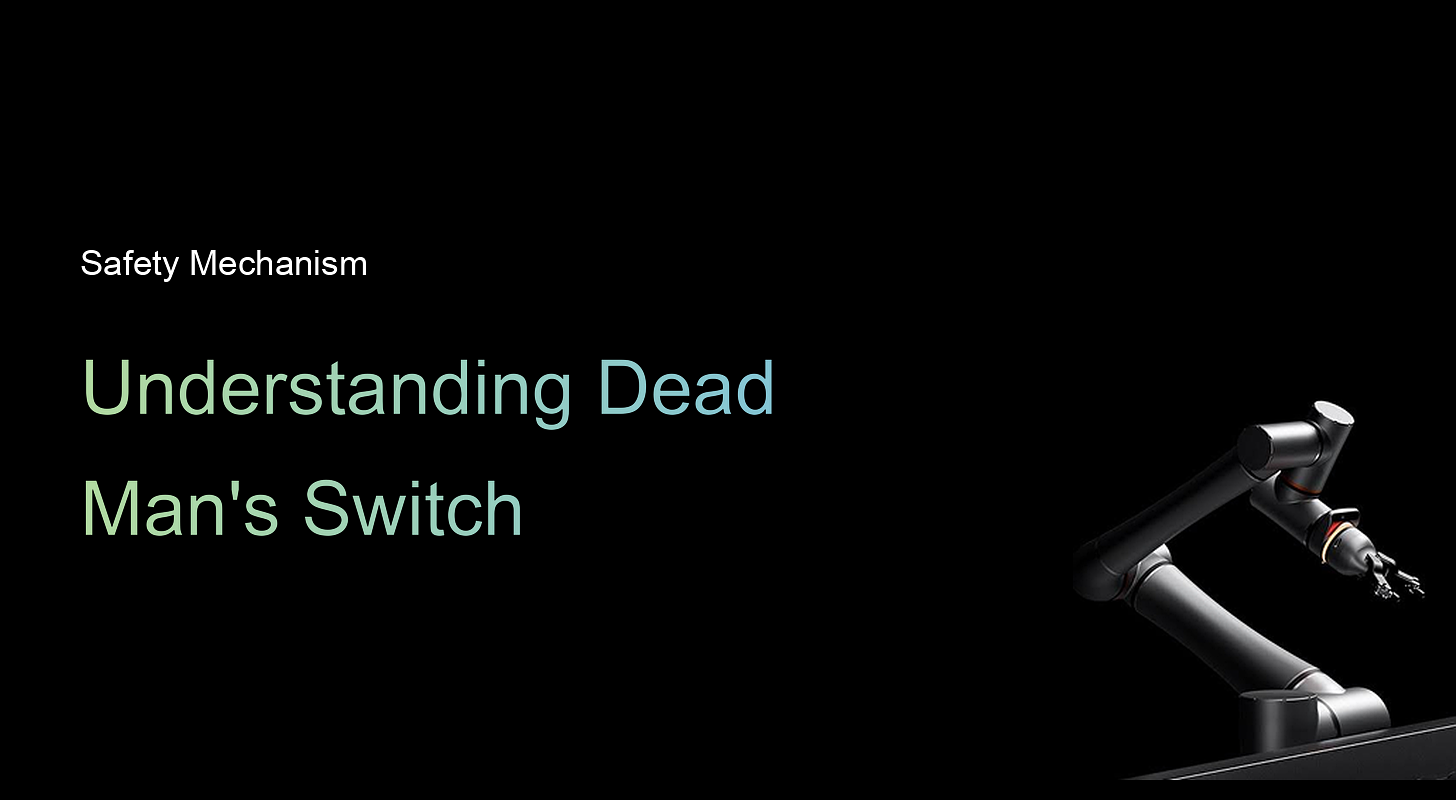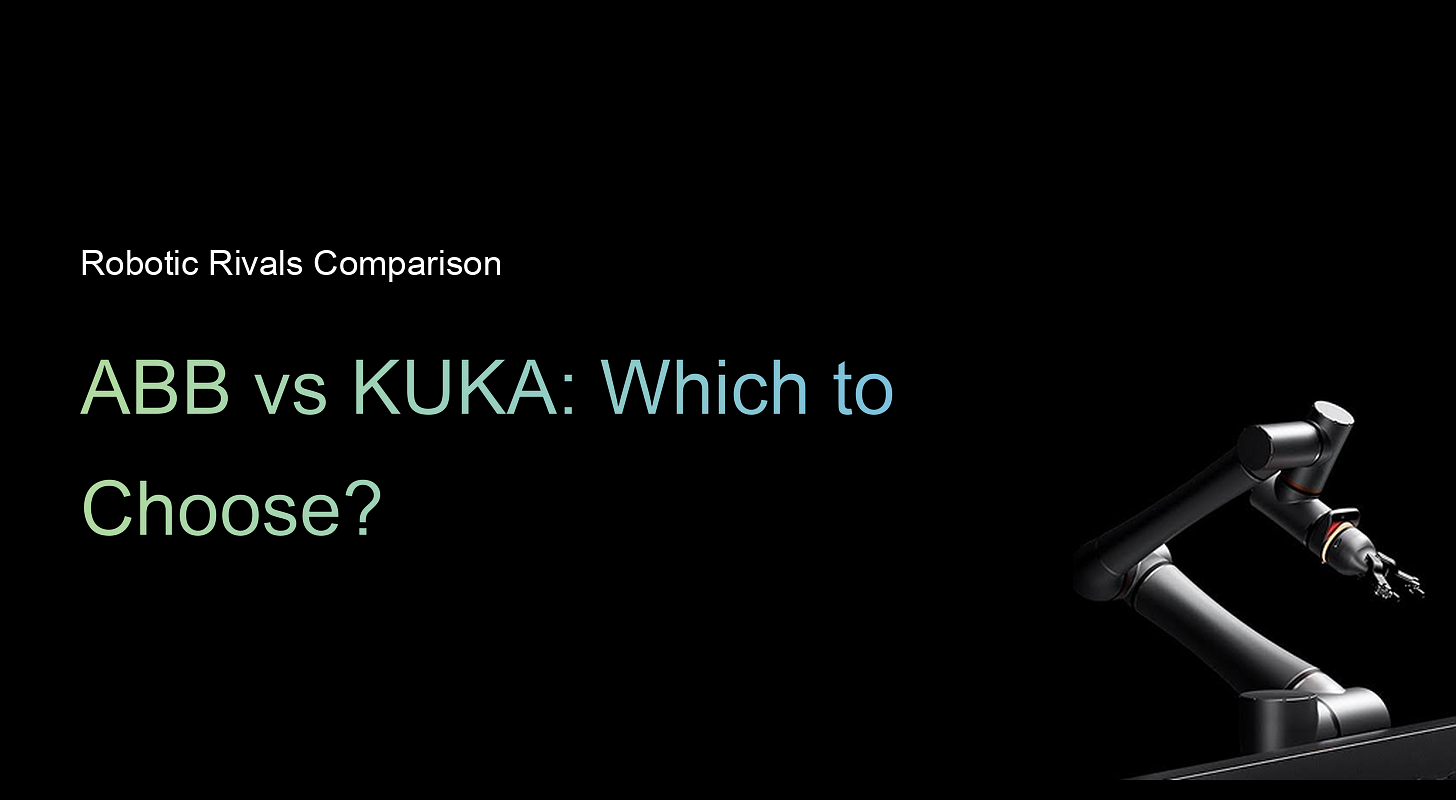The best cobot manufacturers in 2025, including Standard Bots, Universal Robots, and FANUC, make automation more accessible.
Cobots, short for collaborative robots, are built to work safely alongside humans, without cages or complex setups. That’s why they’re showing up everywhere, from factory floors to fulfillment centers.
Looking ahead, Precedence Research forecasts the global collaborative robots market will reach about $53.70 billion by 2033, expanding at a CAGR of 32.7%, as companies look for tools that are fast to deploy and easy to use.
TL;DR: Best cobot brands in 2025 at a glance
What is a cobot?
Cobots are a type of industrial robots designed to work safely alongside humans in a shared workspace. Unlike traditional industrial robots that often require safety cages or barriers, cobots are equipped with features like force-limiting technology, speed and separation monitoring, and advanced sensors to ensure the safety of human coworkers.
They are designed to complement human capabilities, not replace them, often taking on repetitive, tedious, or hazardous tasks while humans focus on more complex work.
They’re easier to install, program, and redeploy, which makes them ideal for both small workshops and large production lines. Whether you’re automating assembly, inspection, or machine tending, cobots offer a faster and more flexible way to get started.
Top 10 cobots in 2025
1. Standard Bots (RO1): Rapid deployment and exceptional ROI
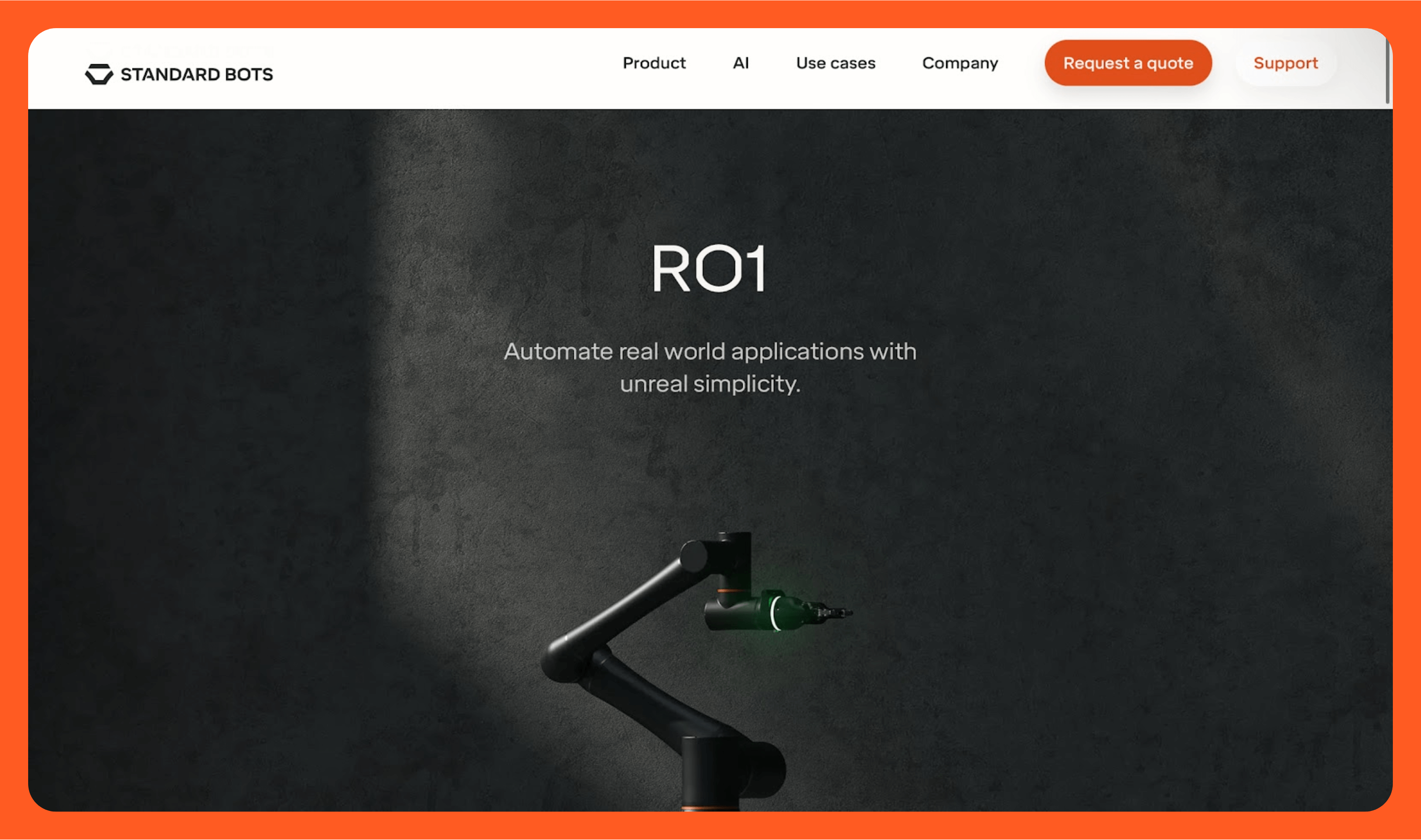
Standard Bots is an emerging player among the best cobot manufacturers, focused on making industrial-grade automation affordable and easy to deploy. With a focus on real use cases like palletizing, welding, and machine tending, the company positions itself as a high-performance alternative to legacy cobot brands without the steep learning curve or bloated pricing.
Popular models & specs
The company’s flagship cobot, the RO1, features an 18 kg payload, 1300 mm reach, ±0.025 mm repeatability, and 6 degrees of freedom. It supports visual programming and no-code workflows, which helps teams adapt it quickly across different tasks.
Strengths
- Fast deployment with no-code setup
- Strong ROI for cobots in manufacturing
- Built-in safety sensors and collision detection
- Extensive support for accessories and integrations
Weaknesses
- Single-model lineup (RO1) limits options
- Lower brand recognition compared to legacy cobot companies
Price: $37,000 (list)
2. Universal Robots (UR Series): Flexible multitasking

Universal Robots is one of the oldest and most recognized collaborative robot manufacturers, often credited with popularizing cobots globally. Founded in 2005 and based in Denmark, it dominates the market with a wide range of user-friendly cobot arms that are widely used across electronics, automotive, and healthcare industries.
Popular models & specs
The UR lineup includes the UR3e, UR5e, UR10e, and UR20, with payloads ranging from 3 to 20 kg and reach from 500 mm to 1750 mm. Each model runs on UR’s proprietary Polyscope software and can be reprogrammed in under 30 minutes, which makes it ideal for flexible environments.
Strengths
- Easy to program and redeploy
- Large install base and proven reliability
- Strong global support and training resources
- Compatible with a wide network of cobot suppliers and end-effectors
Weaknesses
- Higher base cobot price compared to newer brands
- Integration and accessories can drive up total cost
Price range: Pricing isn’t officially available. But as per popular estimates, it costs around $45,000 to $65,000 (robot only)
3. FANUC (CRX Series): Automotive precision applications
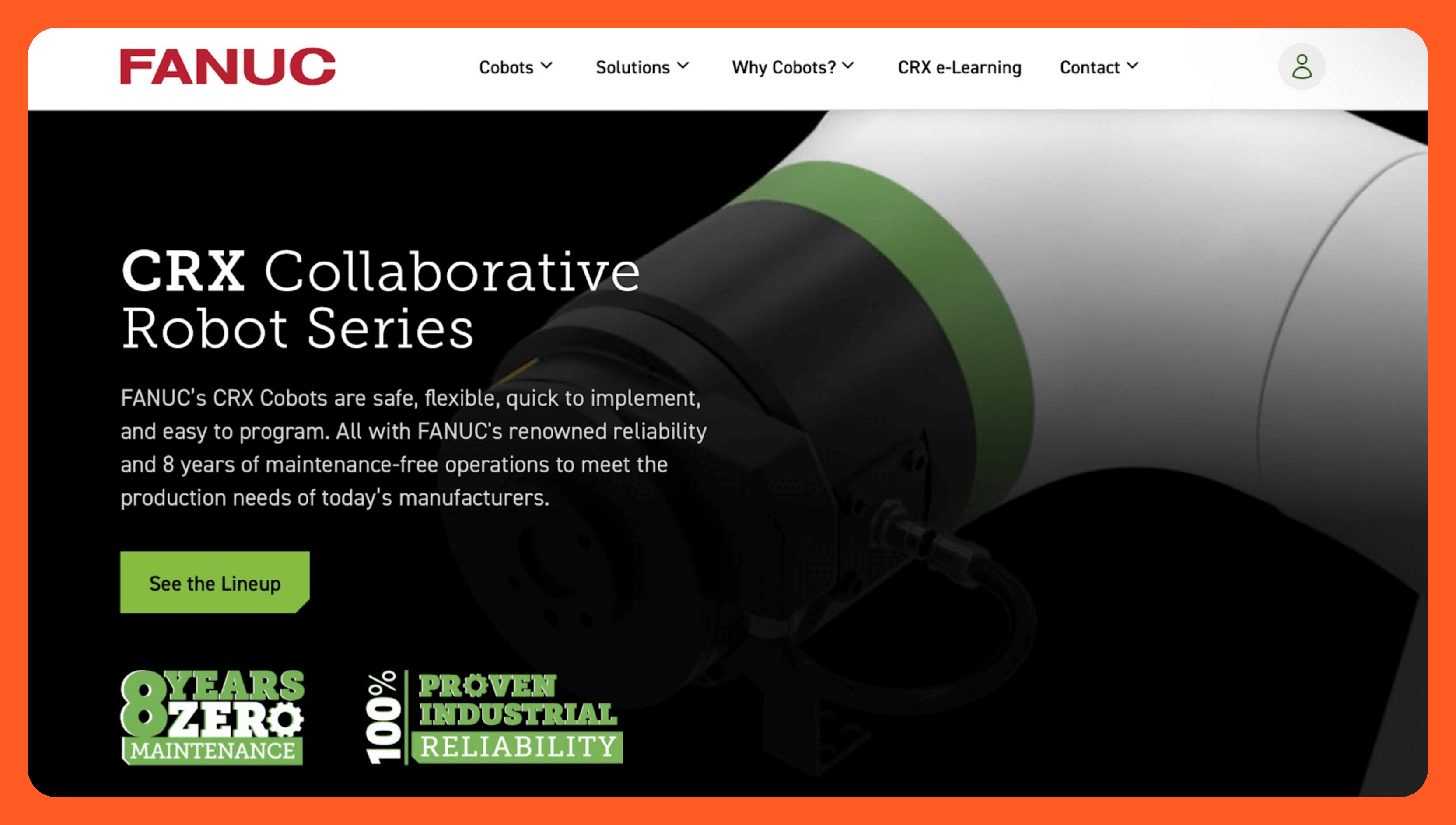
FANUC is a global leader in factory automation and one of the most trusted cobot companies in high-precision industries. Known for its industrial robots, FANUC entered the collaborative robot space with the CR and CRX series, offering the same durability but in a safer, human-friendly form. It’s especially popular in automotive and electronics assembly lines.
Popular models & specs
The CRX Series includes the CRX-5iA, CRX-10iA, and CRX-25iA, with payloads from 5 to 25 kg and reach up to 1889 mm. These cobot arms offer IP67 protection, built-in force sensors, and a simple drag-and-drop programming interface, which makes them well-suited for cobot welding or inspection.
Strengths
- Works well in harsh environments
- Long service life and minimal maintenance
- High payload options with IP-rated hardware
- Strong brand reputation in industrial automation
Weaknesses
- Heavier form factor limits some applications
- Programming can feel more complex than newer no-code solutions
Price range: The official pricing isn’t available. But as per available estimates, it costs around $55,000 to $75,000 (robot only)
4. KUKA (LBR iiwa, LBR iisy): Electronics laboratory automation

KUKA is a long-established name in industrial robotics and one of the top cobot manufacturers, pushing the boundaries of precision and sensitivity. Based in Germany, KUKA’s collaborative lineup focuses on high-end, sensor-rich automation. It is often used in labs, electronics, and advanced assembly settings.
Popular models & specs
The LBR iiwa series comes in 7 and 14 kg payloads with a reach of up to 820 mm and extremely sensitive joint torque sensors. The newer LBR iisy adds plug-and-play usability with a built-in teach pendant, supporting faster deployment for cobots in manufacturing workflows.
Strengths
- Available in cleanroom versions
- Excellent force control for delicate tasks
- Strong support for Industry 4.0 integration
- Highly accurate motion and smooth operation
Weaknesses
- Not ideal for high-speed or heavy-payload applications
Price range: No public pricing is available. But estimates put it around $60,000 to $80,000 (robot only)
5. ABB (GoFa, SWIFTI): Assembly pick-and-place operations
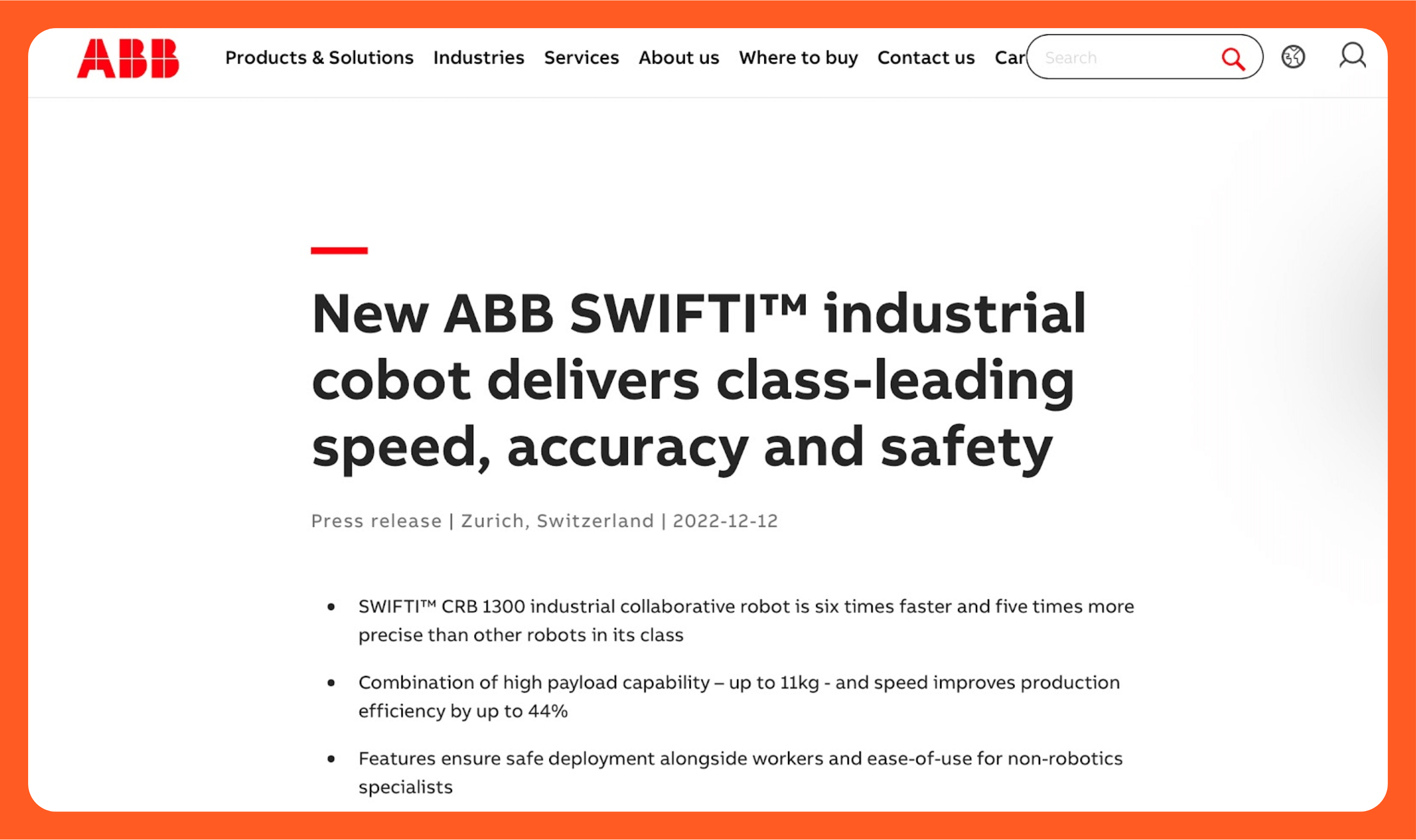
ABB is one of the most established collaborative robot manufacturers, with a global footprint in both traditional automation and cobotics. Known for precision engineering and broad industrial support, ABB’s cobots are designed to blend speed and safety, especially in assembly and pick-and-place applications.
Popular models & specs
The GoFa CRB 15000 offers a 5 kg payload and 950 mm reach with fast cycle times and advanced safety monitoring. The SWIFTI CRB 1100 blends the speed of an industrial robot with collaborative safety, offering a reach of up to 580 mm and up to 4 kg payload.
Strengths
- Strong global support and service network
- Designed for both human and machine interaction
- High-speed performance with safety-rated monitoring
- Easy integration with vision systems and accessories
Weaknesses
- Limited to lower payloads
- Integration costs can add up for smaller teams
Price range: No public pricing. As per estimates, it is around $50,000 to $70,000 (robot only)
6. Yaskawa Motoman (HC Series): Heavy-duty tasks in harsh environments
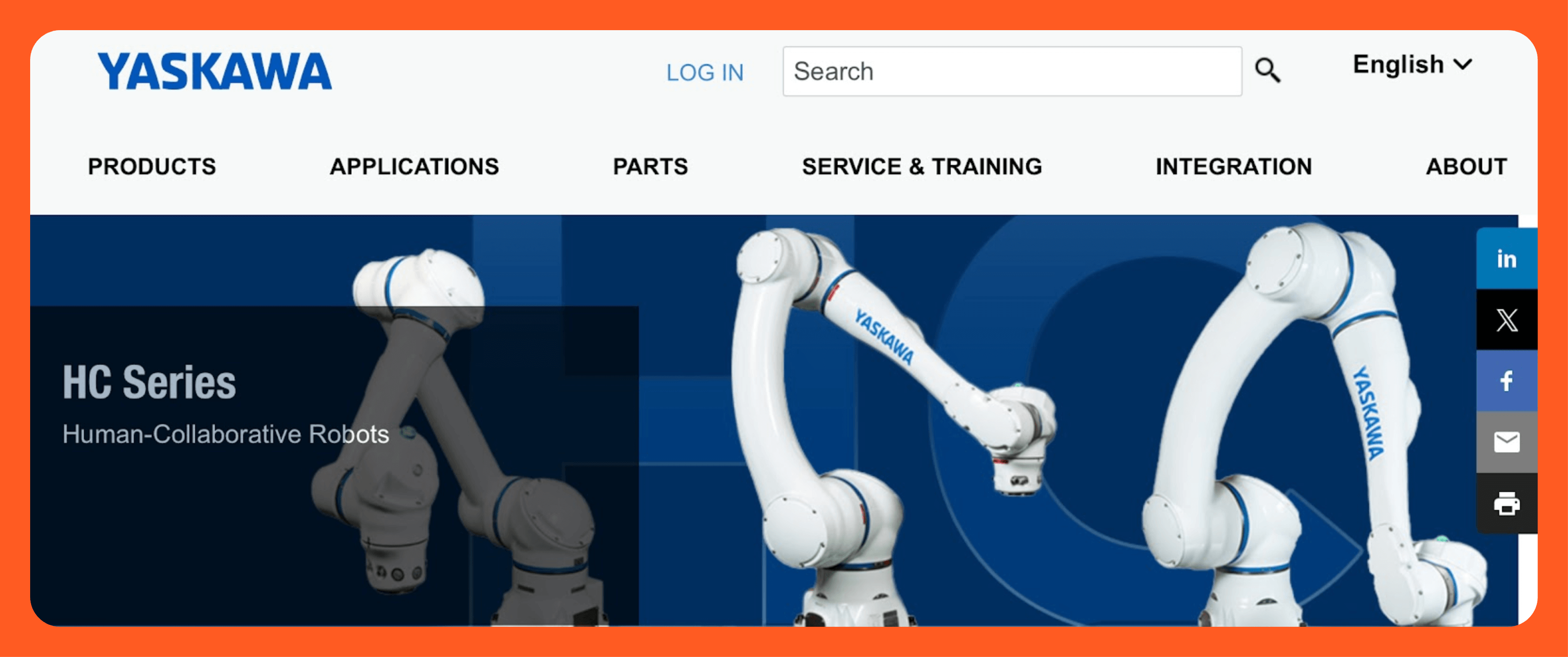
Yaskawa is a major player in global automation and one of the most reliable cobot manufacturers for environments that demand both precision and flexibility. The Motoman HC Series is designed with human-robot collaboration at its core, offering advanced safety features without compromising speed or accuracy.
Popular models & specs
The HC10DT and HC20DT models offer payloads of 10 and 20 kg, respectively, with a reach up to 1900 mm. They’re designed for cobot welding, material handling, and palletizing and feature hand-guided teaching and IP67 ratings for harsh environments.
Strengths
- Easy hand-guided teaching
- Strong uptime record in 24/7 operations
- Reliable performance in dirty or wet conditions
- High payload capacity with industrial-grade durability
Weaknesses
- Setup may require external integrator support
- Software isn’t as beginner-friendly as newer cobot brands
Price range: Pricing isn’t publicly available. It is assumed to be around $50,000 to $80,000 (robot only)
7. Doosan Robotics (M & H Series): Machine tending palletizing
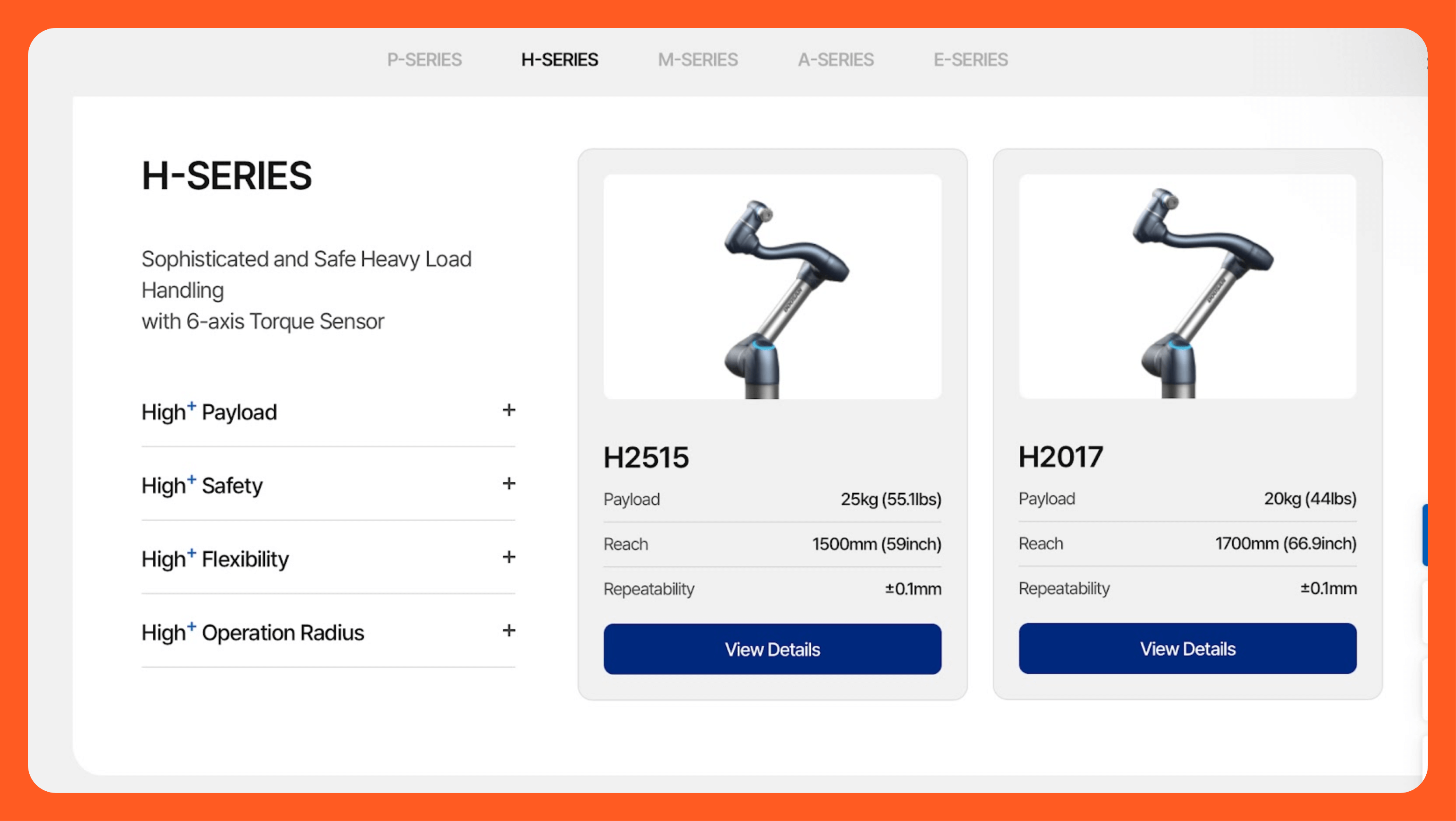
Doosan Robotics is one of the fastest-growing collaborative robot brands, known for combining sleek design with industrial-grade capability. Based in South Korea, Doosan’s cobots are widely used in electronics, logistics, and machine tending, offering strong performance with a premium feel.
Popular models & specs
The M Series (M0609, M1509, M1013, M0617) offers payloads from 6 to 15 kg and reaches up to 1700 mm. The newer H Series pushes that further with up to 25 kg payloads, ideal for heavier tasks like palletizing or CNC loading.
Strengths
- Intuitive interface and fast deployment
- Strong build quality with polished design
- Smooth, precise motion with high repeatability
- Wide payload range, including heavy-lift models
Weaknesses
- Limited global distribution outside Asia and Europe
Price range: No public pricing. The cost is estimated to be around $55,000 to $85,000 (robot only)
8. Techman Robot (TM Series): Compact spaces and diverse production
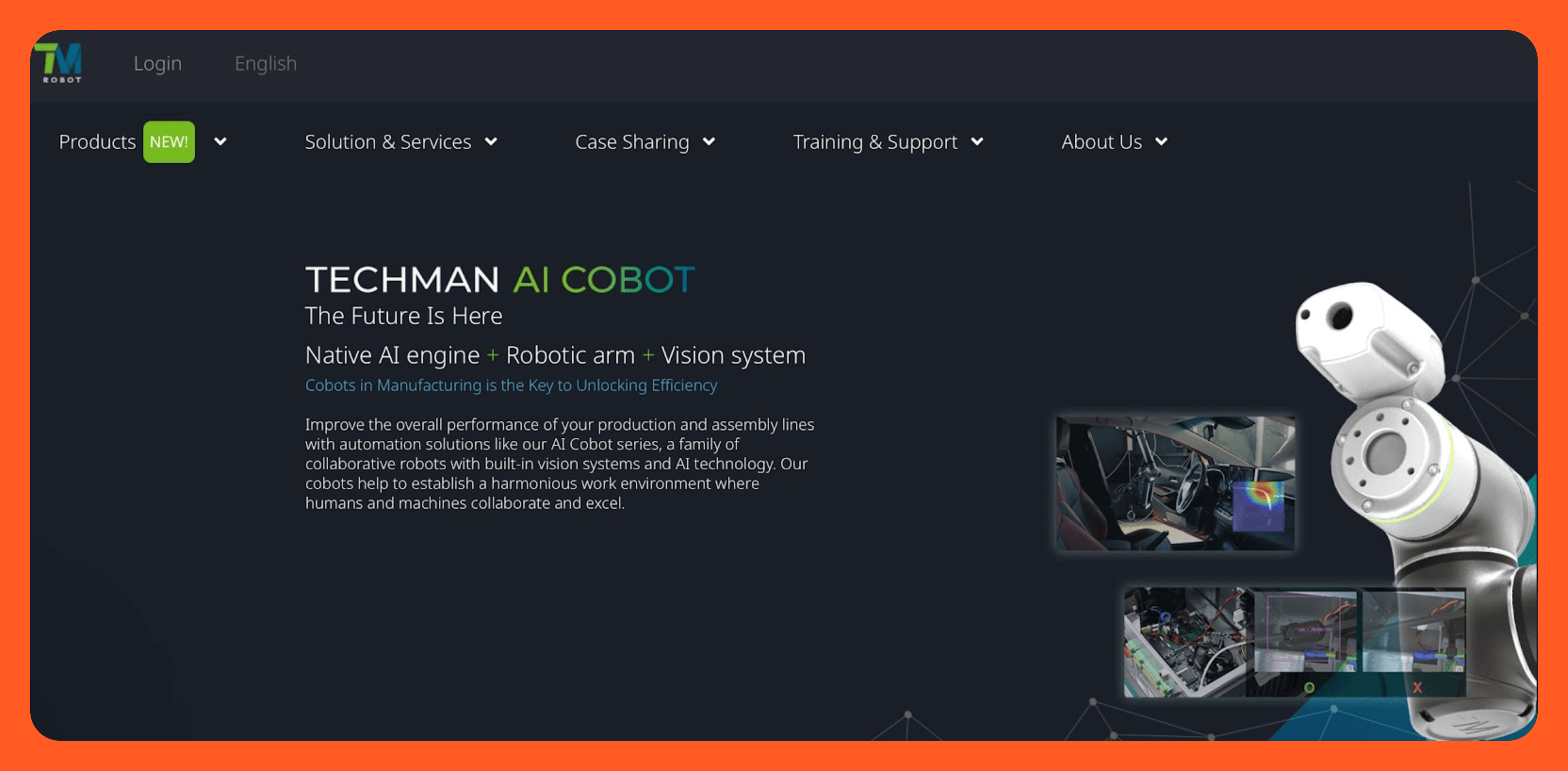
Techman Robot, a subsidiary of Quanta Group, is a rising force among collaborative robot manufacturers. It is known for building cobots with integrated vision systems. Based in Taiwan, Techman’s TM Series is popular in inspection, pick-and-place, and electronics assembly. It is especially useful in cases where space is tight and vision precision matters.
Popular models & specs
TM5, TM12, and TM20 models cover payloads from 6 to 20 kg with a reach up to 1300 mm. Every unit includes a built-in smart camera, which simplifies programming and alignment for vision-guided applications.
Strengths
- Integrated vision
- Compact design and low setup time
- Good balance of cost and performance
- Solid choice for SMEs and high-mix production lines
Weaknesses
- Slightly slower movement in high-speed applications
- Fewer model options compared to leading cobot suppliers
Price range: No official pricing is available. Costs are assumed to be around $35,000 to $65,000 (robot only)
9. Omron (TM Collaborative Robots): Best for Omron automation setups
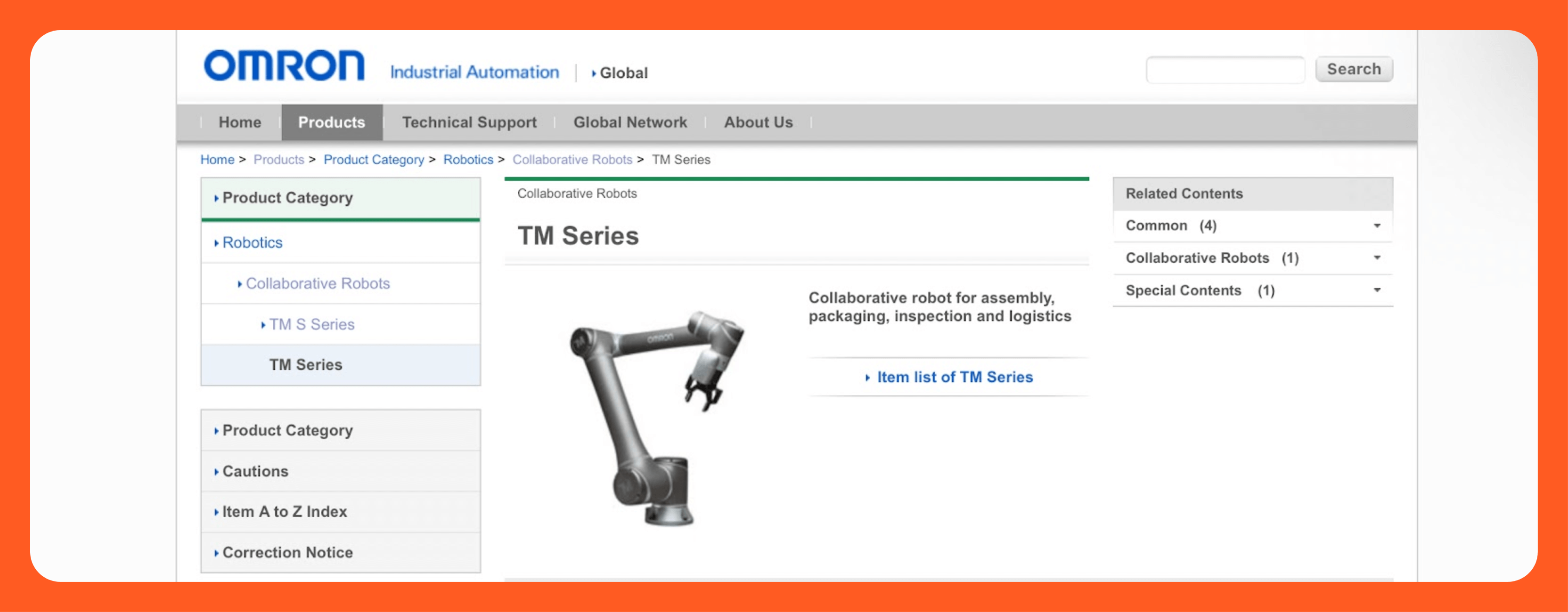
Omron Robotics is a well-established name in industrial automation and one of the few cobot companies combining robotics with deep expertise in sensors, control systems, and safety technology. Its TM Series cobots are built for tight integration with Omron’s automation ecosystem, making them ideal for teams already using Omron PLCs or vision systems.
Popular models & specs
Models range from the TM5 (6 kg payload, 700 mm reach) to the TM20 (20 kg payload, 1300 mm reach). All units include integrated vision, force sensors, and support for cobot welding, packaging, and labeling with straightforward hand-guided teaching.
Strengths
- Built-in camera and vision tools
- Strong safety features for collaborative robot arms
- Smooth integration with Omron automation platforms
- Reliable performance in packaging and inspection workflows
Weaknesses
- Slightly longer lead times for global delivery
- Less flexible if you’re not already using Omron systems
Price range: There is no public pricing. It is estimated to be around $40,000 to $70,000 (robot only)
10. Dobot (CR Series): Educational and lightweight manufacturing
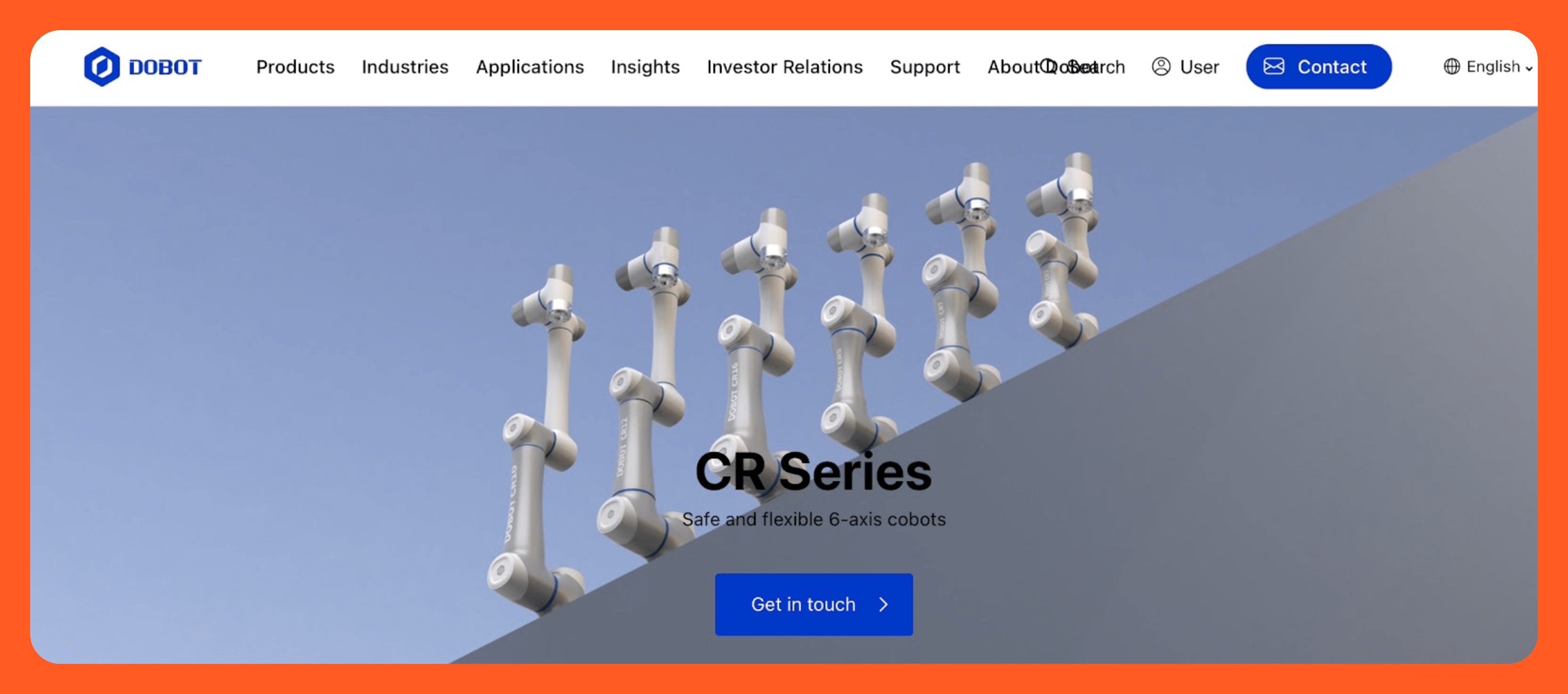
Dobot is a newer name among cobot manufacturers, but it’s built a strong presence in entry-level automation by offering budget-friendly, compact systems. Based in China, Dobot focuses on small business automation and education, making it a go-to for labs, schools, and lightweight manufacturing lines.
Popular models & specs
The CR Series includes cobots like the CR3, CR5, CR10, and CR16, with payloads ranging from 3 to 16 kg and reach from 620 mm to 1223 mm. They’re best suited for pick-and-place, machine tending, and cobots in manufacturing where precision is more important than heavy lifting.
Strengths
- Compact footprint for tight workspaces
- Easy to program with visual interfaces
- Ideal for low-payload tasks and prototyping
- Affordable entry point into collaborative robotics
Weaknesses
- Limited support network outside Asia
- Lower payload and reach than premium cobot brands
Price range: No official pricing. It is estimated to be around $25,000 to $45,000 (robot only)
Key factors when choosing a cobot brand
Payload and reach
Start by understanding the weight and size of the parts you need to move. A cobot used for palletizing or CNC machine loading will need more payload and reach than one used for lightweight assembly.
Ease of programming
Not all cobots are equal when it comes to setup. Some use no-code drag-and-drop systems, while others still rely on traditional teach pendants or proprietary languages. If your team has limited robotics experience, a user-friendly interface can save hours in training and deployment.
Safety certifications
Look for built-in sensors, force-limited joints, and certifications like ISO 10218 or ISO/TS 15066. These ensure your cobot can safely work next to humans. No cages required.
Application fit
Some cobots are optimized for specific jobs like welding, palletizing, or visual inspection. Others are more general-purpose. Know your main use case and choose accordingly. You can explore more real-world cobot applications here.
Price and ROI
Factor in not just the robot arm, but also software, accessories, integration, and training. Total system cost can easily double the sticker price. If you’re unsure what to expect, this cobot price comparison guide is a good starting point.
Where do cobots fit in modern manufacturing?
Cobots make automation possible in places it wasn’t before. In modern manufacturing, they handle everything from pick and place to cobot palletizing, welding, assembly, and machine tending, often without the need for major layout changes or fencing.
One cobot can take over multiple tasks across shifts. For example, a unit like the RO1 can be used for box stacking in the morning, then reprogrammed in minutes for TIG welding after lunch. No external integrator needed. This kind of flexibility is exactly why cobots in manufacturing have grown so fast, especially in small and medium-sized operations.
They also play a key role in supplementing human labor rather than replacing it. When integrated well, cobots take over the dull or dangerous work, letting human workers focus on quality control, problem-solving, and high-skill operations.
Next steps with Standard Bots
Looking to invest in a cobot that delivers industrial-grade performance without the complexity? Standard Bots’ RO1 is the perfect six-axis cobot addition to any manufacturing line, offering unbeatable precision and flexibility.
- Affordable and adaptable: RO1 costs $37K (list). Get high-precision automation at half the cost of traditional robots.
- Precision and power: With a repeatability of ±0.025 mm and an 18 kg payload, RO1 tackles palletizing, welding, assembly, and machine tending with ease.
- AI-driven simplicity: Equipped with AI capabilities on par with GPT-4, RO1 integrates seamlessly with existing workflows for advanced automation.
- Safety-first design: Machine vision and collision detection mean RO1 works safely alongside human operators.
Schedule your demo with our engineers today and see how RO1 can bring AI-powered greatness to your operation.
FAQs
1. Which cobot manufacturer offers the easiest integration with existing CNC machines?
Standard Bots, Universal Robots, and Yaskawa offer the easiest CNC integration. Standard Bots’ RO1 comes with prebuilt I/O, Ethernet/IP, and Modbus support plus software designed specifically for CNC machines, reducing the need for third-party middleware. This built-in compatibility speeds up deployment and lowers integration costs, making it ideal for shops without dedicated robotics engineers.
2. How long does it typically take to achieve ROI after installing a cobot?
It typically takes 6 to 18 months to achieve ROI after installation, depending on the task, runtime, and cost of integration. Cobots used for high-volume applications like palletizing or machine tending often break even faster, especially when deployed across shifts.
Some manufacturers also report faster payback when cobots replace manual labor in repetitive, precision-dependent work, as the reduction in errors and downtime adds to the savings.
3. What safety certifications should a collaborative robot have before deployment on a production line?
A collaborative robot should have ISO 10218-1 and ISO/TS 15066 certifications. These ensure it meets international safety standards for human-robot collaboration.
Many top-tier cobot brands also include force-limited joints, torque sensors, and emergency stop systems as standard features, which further reduce the risk of injury and help meet workplace compliance requirements.
4. Can a single cobot be reprogrammed for multiple tasks within one work shift?
Yes, with visual interfaces and hand-guided programming, modern cobots can switch between tasks in minutes. This makes them ideal for high-mix, low-volume workflows where frequent changes are required. For example, the same cobot can handle palletizing in the morning and assembly in the afternoon without requiring a full system reconfiguration.
5. What maintenance schedule and costs should buyers expect over a cobot’s lifespan?
Schedule maintenance every 6 to 12 months, depending on workload. Maintenance costs average $1,000 to $3,000 annually. These checkups usually include joint lubrication, sensor calibration, and safety system verification to ensure reliable operation. Preventive maintenance helps extend the cobot’s lifespan and reduces the likelihood of costly unplanned downtime.
Join thousands of creators
receiving our weekly articles.










.png)
